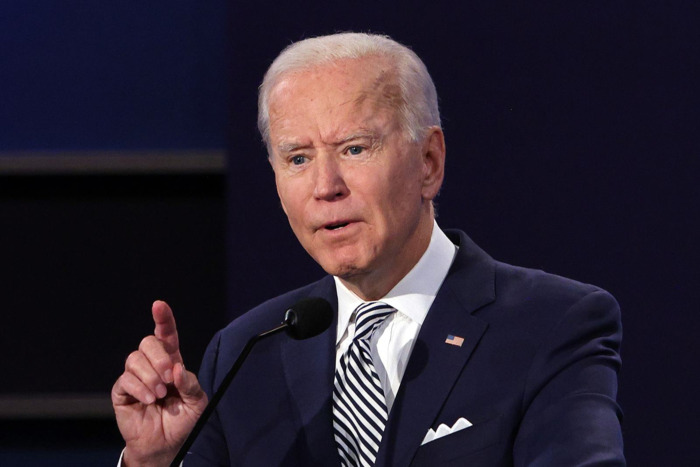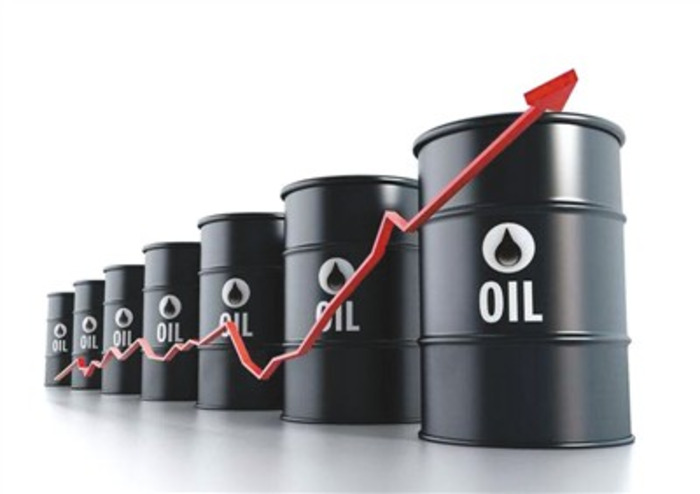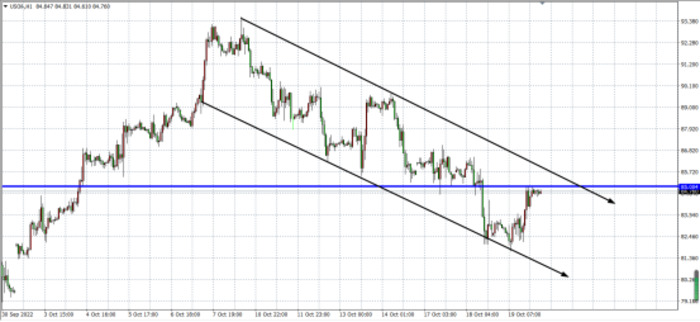Biden shot to suppress the oil market, why did oil prices not fall but rise?
 2022-10-20
2022-10-20
 1208
1208
In response to OPEC+'s sharp production cut plan, after the U.S. government was still powerless after repeated communications, Biden announced the release of 15 million barrels of crude oil into the market to curb the rise in domestic energy prices. However, the conflict between Russia and Ukraine intensified and gasoline and diesel prices continued to rise. After the oil price rebounded, did Biden make the wrong move?
Big dump SPR, Biden intends to mid-term elections
On Wednesday (October 19), U.S. President Biden officially announced that he would release 15 million barrels of crude oil from the U.S. National Strategic Petroleum Reserve into the market, ahead of the previously expected December announcement. The 15 million barrels of crude are part of the 180 million barrels of Strategic Petroleum Reserve (SPR) that began this spring, aimed at stabilizing domestic energy prices in response to the 2 million barrels per day (bpd) production cut announced by OPEC+ on Oct. 5.
In addition, Biden said that current gasoline prices are not falling fast enough, promised to provide additional oil to sell if needed, and said that oil companies can take action now to increase production. U.S. Department of Energy and White House officials held a meeting Monday with executives from oil majors such as Exxon Mobil and ConocoPhillips to inform them of possible near-term changes and ask them to ramp up gasoline and diesel, according to sources. production.
Biden called on oil companies to increase production and not buy back shares amid the conflict between Russia and Ukraine, and that oil companies should use the windfall to boost production and lower fuel prices for consumers. In addition, Biden said that the strategic oil reserve will be replenished in the next few years, and the United States will start buying oil when the US oil price reaches or falls below $70 per barrel.
Although Biden said the above moves were not for political purposes (this is consistent with the statement after OPEC+ cut production). But in fact, there is less than a month left before the US mid-term elections on November 8. According to the latest Fox News poll, only 33% of voters surveyed are currently willing to vote for Biden, and 54% of voters are ready to vote for someone else.
According to an analysis by Clear View Energy Partners, a U.S. energy research organization, in the mid-term elections in November, the elections in Nevada and Pennsylvania may be the key to changing the current tie between Democrats and Republicans in the Senate. "sensitive".

Why did oil prices rise instead of falling?
After Biden announced the above-mentioned series of measures to limit oil prices, WTI crude oil did not fall further, but stabilized at $82.0 and rebounded sharply by more than 2%, hitting the $85.0 level. The reason is that the conflict between Russia and Ukraine is still intensifying, and the influence of the United States to release its strategic oil reserves is far less than the geopolitical crisis.
According to the latest EIA report, inventories in the U.S. Strategic Petroleum Reserve (SPR) fell by 3.564 million barrels to 405.1 million barrels, or 0.87%, in the week of October 14. Inventories were at their lowest since the week of June 1, 1984. This means that it is less likely that the U.S. government will further release the SPR significantly.
UBS said a further release of U.S. oil reserves would not address any structural imbalances caused by years of underinvestment in the oil market and the world's "increasing thirst for oil." The oil market is expected to remain tight in the next few years, and the U.S. will not release oil reserves on a large scale.
The Biden administration, on the other hand, did not announce previously expected "dramatic" measures to ban or restrict gasoline or diesel exports, raising concerns about gasoline shortages in the coming months.

Fed rate hike prospects remain hot
Although the US dollar has entered a correction in the past three weeks and has not continued to refresh a new high in 20 years, the basis for the US dollar's upward movement has not changed, because the Fed's policy outlook is still aggressive. Federal Reserve Governor Neel Kashkari pointed out on Wednesday (October 18) that interest rates cannot stop at 4.5% or 4.75% if core inflation strengthens.
According to the CME Fed Watch Tool, the probability of raising interest rates by 75 basis points at the November meeting is expected to exceed 90%, and the probability of continuing to raise interest rates by 75 basis points at the December meeting is also more than 70%. This means that the Fed will raise interest rates by 75 basis points in the next two meetings this year, and this five consecutive rate hikes of 75 basis points will create a history.
The US dollar will continue its overall strength under the support of monetary policy prospects, which determines that the price of crude oil will tend to weaken in the later period. In addition, in the context of high inflation, Western countries' "price restrictions" measures will be effective in the short term, which means that oil prices may not improve before the mid-term elections or even before the European oil embargo on Russia officially takes effect on December 5, and energy prices are expected to remain stable. Downtrend since June. October natural gas futures ended down 4.9%, the fourth straight session of losses, to settle at $5.4620 per million British thermal units.
Outlook

Looking forward to the market outlook, the overall downward trend of US crude oil has not been broken, and the downside risk has not been lifted. The $85 mark is an important resistance for oil prices. To reverse the decline, it must first effectively break through the $85 level, and it is expected to reach the $90 mark in the later stage. The pressure of $85 was blocked again and fell, and it continued to see a callback near $82-80.
The above information is provided by special analysts and is for reference only. CM Trade does not guarantee the accuracy, timeliness and completeness of the information content, so you should not place too much reliance on the information provided. CM Trade is not a company that provides financial advice, and only provides services of the nature of execution of orders. Readers are advised to seek relevant investment advice on their own. Please see our full disclaimer.

CM Trade
As a world leading financial trading platform, CMtrade Provides comprehensive one-stop trading services and opportunities for traders.
[Products]
The platform provides over 32 kinds of popular financial products such as forex, precious metals, crude oil, indices, cryptocurrencies and more.
[System]
2 top trading systems CM Trade MT4 / CM Trade APP, powerful and easy to operate
[Service]
Comprehensive market news, professional market analysis, 7*24 hours online customer service
[Advantage]
Low cost, high leverage, flexible one-stop all day two-way trading.
[Authority]
Licensed and strictly regulated by authorities. Traders deposits are independently kept by the bank. Fast deposit and withdrawal. Fair, efficient and transparent trading environment.
CM Trade Mobile Application
Economics Calendar
MoreYou May Also Like



 简体中文
简体中文
 ภาษาไทย
ภาษาไทย
 繁體中文
繁體中文
 Indonesia
Indonesia











